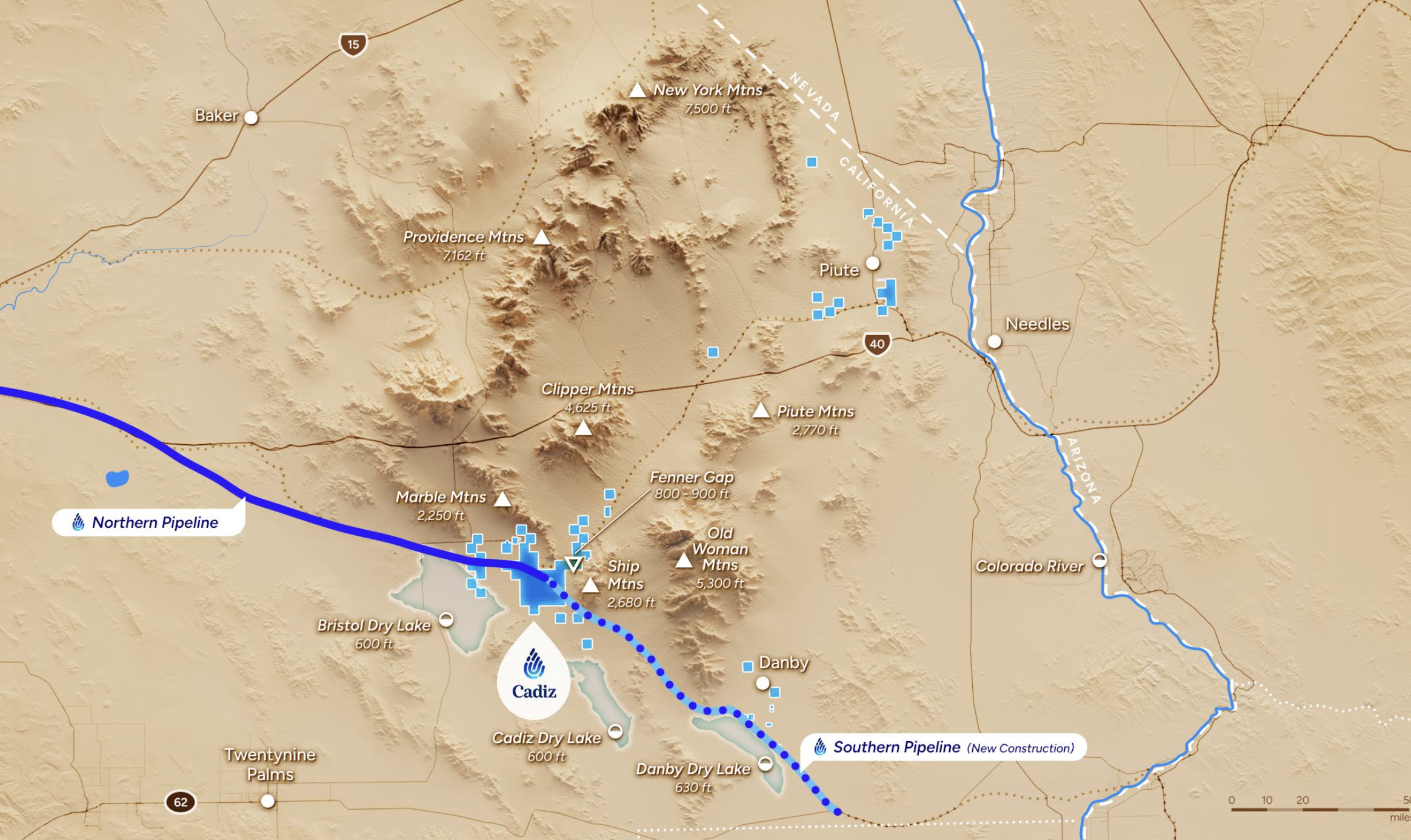
- Details
- By Levi Rickert
A Letter of Intent between the Lytton Rancheria and Cadiz, Inc. was announced today, outlining the tribe’s plan to invest up to $50 million in a groundwater banking project in the Mojave Desert, known as the Mojave Groundwater Bank.
This $50 million investment will be the largest water infrastructure investment off tribal land by any Native American tribe in history. The arrangement empowers Indigenous communities to take a central role in decision-making and investment in crucial water projects.
The partnership between Cadiz and Lytton marks a groundbreaking collaboration in water resource management, with tribes holding a majority ownership stake in the Mojave Groundwater Bank. The ownership structure of the deal empowers Indigenous communities to become part of the decision-making process and investments in vital water projects.
The Mojave Groundwater Bank will feature over 300 miles of pipelines connecting to California's water transportation network, delivering new sources of clean water supply and storage to underserved, disadvantaged, and tribal communities in the Mojave River Basin, the Colorado River Basin, and California’s Inland Empire—regions that currently lack access to clean, reliable water.
The Mojave Groundwater Bank is a major clean water infrastructure project being developed by Cadiz in California’s Mojave Desert. Located at the base of a 2,000-square-mile watershed system fed by rain and snow from the New York and Providence mountains, the underground reservoir currently holds an estimated 30 to 40 million acre-feet of water—more than the combined storage capacity of Lake Mead and Lake Powell, the two largest surface reservoirs in the United States.
The Lytton Rancheria, which is headquartered in Santa Jose, Calif. and 550 miles from the project in southern California, the investment is more than a monetary investment in the tribe’s well-being. One strong selling point for the Lytton Rancheria is the anticipation other tribes will be able to use the Mojave Groundwater Bank water pipeline to supply other tribes that have had difficulty obtaining water.
“As a tribal government, we take our responsibility to be good stewards of the land and the environment seriously. Working with other tribal governments, Cadiz and other responsible environmental investors to develop a sustainable, responsibly managed water source in these shifting times is something we want to be involved in.,” Lytton Tribal Chairperson Andy Mejia stated, “With tribal involvement in the direction and operation of this project, we can ensure that all people have a chance to benefit from this critical water resource."
For Cadiz Chief Executive Officer and Chair of the Board Susan Kennedy, the project gives the tribe leverage to control its own destiny when it comes to their source of water supply.
“This gives the tribe, instead of being a zero sum fight over existing water rights, they now own the biggest water source in southern California,” Kennedy said to Native News Online. “It gives them a lot of leverage to trade water north and south.”
She said Cadiz is honored to create this groundbreaking partnership with Lytton to develop this important project for the benefit of underserved and Indigenous communities.
“Access to clean water will be the single greatest challenge many communities in California and the Southwest face in the coming decades. We are grateful for the chance to be part of the solution,” Kennedy said.
Cadiz anticipates beginning construction of the Mojave Groundwater Bank in 2025, with initial water deliveries projected for as early as 2026.
More Stories Like This
Native News Weekly (August 25, 2024): D.C. BriefsUS Presidents in Their Own Words Concerning American Indians
Oral History Project Announces 14th Stop in Portland, Oregon: NABS Continues to Gather Crucial Stories Across Indian Country
American Indian Business Enterprise opens applications for Native Farmer and Rancher Project
American Indigenous Tourism Association Launches New Era of Cultural Travel at 27th Annual Conference
Help us tell the stories that could save Native languages and food traditions
At a critical moment for Indian Country, Native News Online is embarking on our most ambitious reporting project yet: "Cultivating Culture," a three-year investigation into two forces shaping Native community survival—food sovereignty and language revitalization.
The devastating impact of COVID-19 accelerated the loss of Native elders and with them, irreplaceable cultural knowledge. Yet across tribal communities, innovative leaders are fighting back, reclaiming traditional food systems and breathing new life into Native languages. These aren't just cultural preservation efforts—they're powerful pathways to community health, healing, and resilience.
Our dedicated reporting team will spend three years documenting these stories through on-the-ground reporting in 18 tribal communities, producing over 200 in-depth stories, 18 podcast episodes, and multimedia content that amplifies Indigenous voices. We'll show policymakers, funders, and allies how cultural restoration directly impacts physical and mental wellness while celebrating successful models of sovereignty and self-determination.
This isn't corporate media parachuting into Indian Country for a quick story. This is sustained, relationship-based journalism by Native reporters who understand these communities. It's "Warrior Journalism"—fearless reporting that serves the 5.5 million readers who depend on us for news that mainstream media often ignores.
We need your help right now. While we've secured partial funding, we're still $450,000 short of our three-year budget. Our immediate goal is $25,000 this month to keep this critical work moving forward—funding reporter salaries, travel to remote communities, photography, and the deep reporting these stories deserve.
Every dollar directly supports Indigenous journalists telling Indigenous stories. Whether it's $5 or $50, your contribution ensures these vital narratives of resilience, innovation, and hope don't disappear into silence.
 The stakes couldn't be higher. Native languages are being lost at an alarming rate. Food insecurity plagues many tribal communities. But solutions are emerging, and these stories need to be told.
The stakes couldn't be higher. Native languages are being lost at an alarming rate. Food insecurity plagues many tribal communities. But solutions are emerging, and these stories need to be told.
Support independent Native journalism. Fund the stories that matter.
Levi Rickert (Potawatomi), Editor & Publisher

